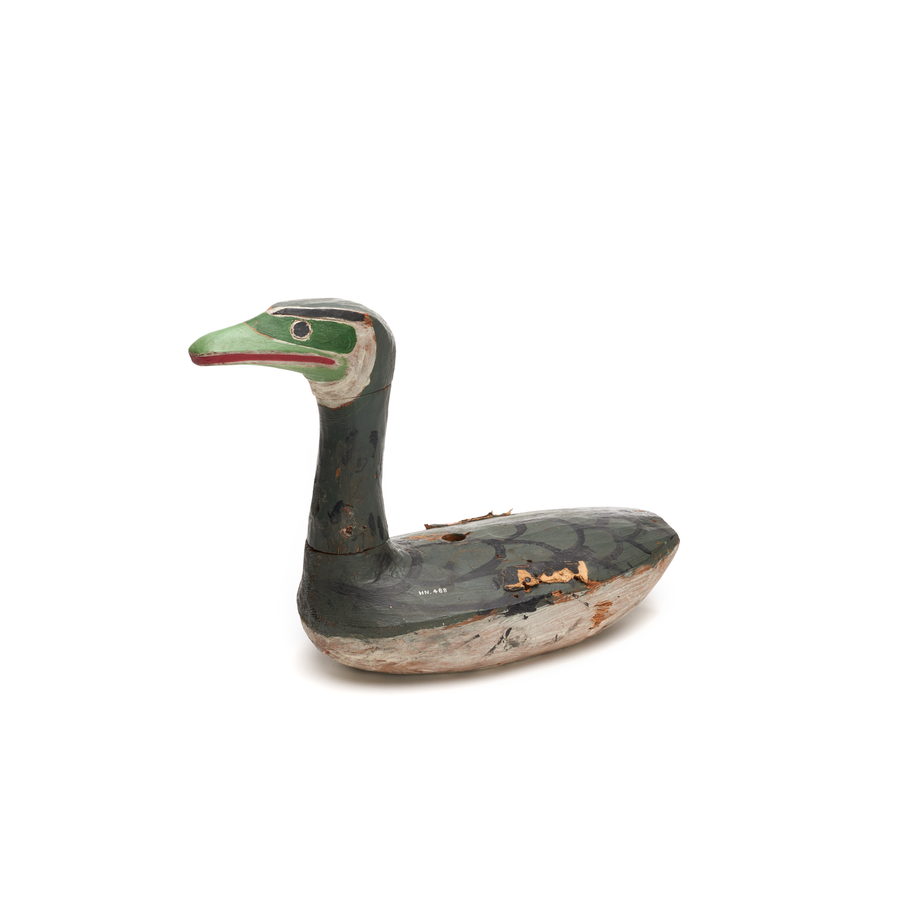Duck
Duck dance puppet
This carved duck once had painted cardboard wings and a tail and would have been held up on a stick to look like it was flying.
Owner
Iwakalas, Harry Hanuse, Mamalilikala (Village Island)
Catalogue Information
Provenance
Owned by Harry Hanuse until its forced surrender to Indian Agent William Halliday on March 25, 1922. Halliday later displayed and photographed the seized pieces at the Parish Hall in Alert Bay. After doing an inventory, he crated the items in June, and at the end of September he shipped some of them to the Royal Ontario Museum in Toronto, on long-term loan from the National Museum of Man (now the Canadian Museum of History). They remained in the possession of the ROM until the NMM pulled its loan and returned the pieces to the Nuyumbalees and U'mista cultural societies in 1988. In September 1993 Dan Hanuse Sr. requested that his father's pieces be transferred from Nuyumbalees to U'mista as per the wishes of the majority of Harry Hanuse's descendants.
Materials
Wood, Cedar; Paint; Metal; Paper
Accession Number
94.09.012
Physical Description
The duck was frequently associated with K´umugwe', the ruler of the undersea world. It is represented as floating on the water, sometimes with its wings spread out. This duck is realistically carved, and painted dark green and decorated with scalloped lines to suggest the feathers of the bird. It may have been the top part of a K´umugwe' mask or of a talking stick, as indicated by one informant. The cardboard wings attached to the main body of the duck have been born apart.
Wooden duck with the body carved from one piece of wood. It is painted dark green with black pupils and eyebrows. There are cardboard fragments present mid-body, used to hold wing structures.
Green, green, black, white, red.
